Gerry Adams's Blog, page 59
May 8, 2014
Four Days in Antrim Barracks
 The Balmoral Press Conference on my release
My recent detention and interrogation was a serious attempt to bring charges against me. It was conducted by the Retrospective Major Investigation Team of the PSNI or REMIT, which is based at Seapark, Carrickfergus, County Antrim.
The Balmoral Press Conference on my release
My recent detention and interrogation was a serious attempt to bring charges against me. It was conducted by the Retrospective Major Investigation Team of the PSNI or REMIT, which is based at Seapark, Carrickfergus, County Antrim.I had contacted the PSNI through my solicitor, Seamus Collins, in March to tell them I was available to meet them. This followed another intense round of media speculation which has tried to link me to the killing in 1972 of Mrs. Jean McConville. It is part of a sustained malicious, untruthful and sinister campaign going back many years.
Last Monday the PSNI responded to my solicitor. They said they wanted to speak to me. I was concerned about the timing. Sinn Féin is currently involved in very important EU and local government elections. Notwithstanding this I left Leinster House and Leaders Questions with the Taoiseach on the Wednesday afternoon and travelled to the Antrim Serious Crime Suite where I arrived at 8.05pm.
En route I talked to the senior investigating officer a number of times to inform him of my estimated time of arrival. He was insisting that I meet him the car park opposite the PSNI barracks. He told me that I must get into a squad car and that he would then arrest me and drive me into the barracks. I said I would not do this and that he could arrest me inside the barracks. He said he couldn’t do this under the legislation and that I had to be arrested outside of the precincts of the station.
Because I thought that this was merely a ruse to allow the media to be told that I had been arrested and brought to the Serious Crime Suite I told him I was going directly to the station of my own accord, voluntarily. As it turned out there is no legislative bar on me being arrested within the precincts of the station. And subsequently that’s exactly what happened shortly after 8pm.
My solicitor was present. I was escorted by two detectives from REMIT to the Serious Crime Suite which is a separate complex within the barracks. I was seen by a doctor at 10.40pm and a custody Sergeant then took me through all of the processes and protocols. My belt, tie, comb, watch, Fainne and Easter Lily pins were removed. My solicitor made representations that I be allowed to keep my pen and notebook given that the offence that I was accused of occurred 42 years ago. After some toing and froing, I was eventually granted this request by the custody superintendent.
Shortly before the first of thirty three taped interviews I was served with a pre-interview brief. This accused me of IRA membership and conspiracy in the murder of Jean McConville. It also claimed that the PSNI had new evidential material to put to me. The interview commenced at 10.55pm. There were two interrogators – a man and a woman who were monitored and directed by more senior officers in another room. They conducted all of the interrogations. All of this was recorded and video taped. My private consultations with my solicitor may also have been covertly recorded. The male detective cautioned me. He told me that I had the right to remain silent but if I did remain silent a court could draw an inference from this.
I was told that the interrogations were an evidence gathering process and that they would be making the case that I was a member of the IRA; that I had a senior managerial roll in Belfast at the time of Mrs. Jean McConville’s abduction, and that I was therefore bound to know about her killing.
The interview began with my being asked where I was born. I challenged my interrogators to produce the new evidential material. They said that this would happen at a later interview but they wanted to take me through my childhood, family history and so on. I told them that I had no desire to do this but they persisted. This went on until 11.39pm when they turned off the tapes to go ‘and consult’.
Over the following four days it became clear that the objective of the interviews was to get to the point where they could charge me with membership of the IRA and thereby link me to the McConville case. The membership charge was clearly their principal goal. The interrogators made no secret of this. At one point the male detective described their plan as ‘a stage managed approach’. It later transpired that it was a phased strategy with nine different phases.
The first phases dealt with my family history of republican activism. My own early involvement in Sinn Féin as a teenager - when it was a banned organisation. My time in the 1960s in the civil rights movement and various housing action groups in west Belfast. The pogroms of 1969 and the start of the ‘troubles’.
They asserted that I was guilty of IRA membership through association because of my family background – my friends. They referred to countless so-called ‘open source’ material which they said linked me to the IRA. These were anonymous newspaper articles from 1971 and 72, photographs of Martin McGuinness and I at Republican funerals, and books written about the period.
If any of these claimed I was in the IRA then that was, according to my interrogators, evidence which they wanted to put to me for response. They consistently cast up my habit of referring to friends as ‘comrades’. This they said was evidence of IRA membership.
They claimed I was turned by the Special Branch during interrogations in Palace Barracks in 1972 and that I became an MI5 agent!
They also spoke about the peace talks in 1972, my periods of internment and imprisonment in Long Kesh. This was presented as ‘bad character evidence.’
Much of the interrogations concerned the so-called Belfast Project conceived by Paul Bew, University lecturer and a former advisor to former Unionist leader David Trimble, and run by Ed Moloney and Anthony McIntyre who were paid handsomely.
Both Moloney and McIntyre are opponents of the Sinn Féin leadership and our peace strategy and have interviewed former republicans who are also hostile to me and other Sinn Féin leaders.
These former republicans have accused us of betrayal and sell-out and have said we should be shot because of our support for the Good Friday Agreement and policing.
The allegation of conspiracy in the killing of Mrs. McConville is based almost exclusively on hearsay from unnamed alleged Boston College interviewees but mainly from the late Dolours Price and Brendan Hughes. Other anonymous alleged Belfast Project interviewees were identified only by a letter of the alphabet, e.g. interviewee R or Y. One of these is claimed by the PSNI to be Ivor Bell although the interrogators told me he has denied the allegations. In the course of my interrogations they played what they alleged was a recording by Ivor Bell. They asked me to confirm that this was indeed his voice. I told them I could not do that.
I rejected all the allegations made about me in the Boston Tapes.
These tapes have now been totally discredited. Historians from the History Department of Boston College have made it clear that this ‘is not and never was a Boston College History Department project.’
A spokesman for the College has also castigated Moloney and McIntyre and confirmed that the College would be prepared to hand back interviews to those involved.
For the record let me state once again that I am innocent of any involvement in the abduction, killing or burial of Mrs. McConville or of IRA membership. I have never disassociated myself from the IRA and I never will but I am not uncritical of IRA actions and particularly the terrible injustice inflicted on Mrs. McConville and her family. I very much regret what happened to them and their mother and understand the antipathy they feel towards republicans.
The family has the right to seek redress in whatever way they chose or through whatever avenue is open to them. This case raises in a very stark way the need for the legacy issues of the past to be addressed in a victim centred way. Of course this is very challenging. Not all victims have the same demands.
Sinn Féin is committed to dealing with the past, including the issue of victims and their families. We have put forward our own proposals for an independent international truth recovery process which both governments have rejected. We have also signed up for the compromise proposals that were presented by US envoys Richard Haass and Meghan O Sullivan.
The two unionist parties and the British government have not.
Sinn Féin is for policing. There is no doubt about this. Civic, accountable, public service policing. That is what we will continue to focus on. It has not been achieved yet.
During my interrogation no new evidential material, indeed no evidence of any kind was produced. When I was being released I made a formal complaint about aspects of my interrogation which will in due course be dealt with by the Police Ombudsman.
My arrest and the very serious attempt to charge me with IRA membership during the 1970s is damaging to the peace process, and the political institutions.
Finally let me be clear there is only one way for our society to go and that is forward. I am a united Irelander. I want to live in a citizen centred, rights based society. There is now a peaceful and democratic way to achieve this. The two governments are guarantors of the Good Friday Agreement. They have failed in this responsibility. The future belongs to everyone. So, civic society, church leaders, trade unions, the media, academia, and private citizens must find a way to provide positive leadership. The British and Irish governments are obliged to do likewise.
People in Britain, the USA and internationally also have a role. The people of the island of Ireland endorsed the Good Friday Agreement. It is the peoples agreement. It does not belong to the elites. It must be defended, implemented and promoted.
Yes, deal with the past. Yes deal with victims. But the focus needs to be on the future. That is the road we are on. There will be bumps on that road. There will be diversions. There are powerful vested interests who have not bought into the peace process and the Good Friday Agreement. Obstacles will be erected but we must build the peace and see off the sinister forces who are against equality and justice for everyone.

Remembering Bobby Sands and his nine comrades
Published on May 08, 2014 17:52
April 24, 2014
Protecting the most historic site in modern Ireland
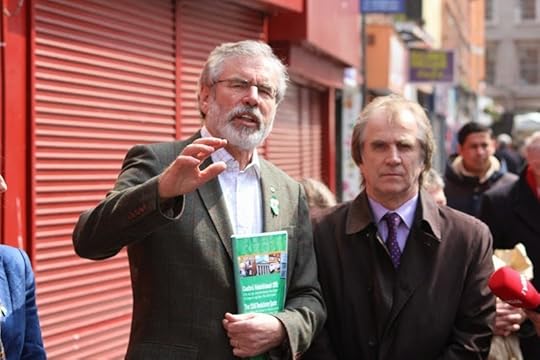 Mise agus James Connolly Heron in Moore Street
I was in Dublin on Easter Sunday morning for the annual Sinn Féin commemoration to mark the Easter Rising of 1916. The Dublin event was one of hundreds organized by republicans to take place across the island of Ireland and in far off places. Not that you would have known from the coverage of the day’s events by RTE. Section 31 may be gone but sadly its legacy remains.
Mise agus James Connolly Heron in Moore Street
I was in Dublin on Easter Sunday morning for the annual Sinn Féin commemoration to mark the Easter Rising of 1916. The Dublin event was one of hundreds organized by republicans to take place across the island of Ireland and in far off places. Not that you would have known from the coverage of the day’s events by RTE. Section 31 may be gone but sadly its legacy remains.For regular readers of this blog you will already know of the concern I have about the government’s failure to properly plan for a Revolutionary Quarter in Dublin around the iconic sites that are linked to the Easter Rising. In particular, like many others, including relatives of the leaders who were executed, I believe the government’s proposals for the Moore Street National Monument, where the leaders met for the last time, to be woefully inadequate and shameful.
Republicans are determined to ensure that 2016, the 1916 Centenary, is marked in the most appropriate way possible, as a fitting popular acknowledgement of the past but also, and just as importantly, as a pointer to a better future.
In a sad metaphor of the state we live in, the Moore Street buildings that survived British bombardment in 1916 now face destruction from property developers who plan to reduce it to rubble and build a shopping centre in its place.
The deterioration of the National Monument which has languished in a vacant and neglected state for many years and the potential threat to the monument under a current planning application is a matter of serious concern to Sinn Féin and many other citizens.
So, on Sunday I launched ‘The 1916 Revolutionary Quarter. A vision for Dublin’s historic centre.’ A set of proposals published by Sinn Féin Átha Cliath.
The document is aimed at ensuring that the 1916 National Monument at Nos. 14-17 Moore Street is fully protected and preserved in its entirety as designated and that the surrounding buildings, streets and laneways are retained in such a manner that the potential to develop this area into a 1916 historic/cultural quarter can be fulfilled.
The last Headquarters of the 1916 leaders has come far closer to demolition than their place of execution in Kilmainham Jail. Kilmainham provides an exact parallel with the National Monument in Moore Street. Kilmainham Jail stands today as one of the best preserved and documented and one of the most visited historical buildings in Europe.Only for the dedication of a group of private citizens Kilmainham Jail would have fallen into ruin and would have been erased from our capital city. A group of volunteers, many of whom had themselves fought for Irish freedom, banded together and through voluntary work and campaigning they ensured that the Jail was saved and turned into a museum. Only then did the State step in.
Similarly, it was the efforts of private citizens, including relatives of the leaders and participants in the 1916 Rising, that saved 14-17 Moore Street from destruction thus far.The buildings and lanes of history where the last act in the drama of the 1916 Easter Week Rising took place need to be preserved and enhanced. This part of the centre of our capital city needs to be cherished for its unique historical and educational value and for its heritage of revolutionary history.
For this to be possible, the entire terrace, 10 to 25 Moore Street, first needs to be protected, preserved and restored. The terrace must be seen as a unit, a block of buildings occupied by republican forces at the end of the Rising and the site, in No. 16, of the last meeting of the Provisional Government.
 Lynn Boylan, mise agus James Connolly Heron
In addition, the Block encompassed by Moore Street, Henry Street/GPO/O’Connell St and Parnell St should be designated as a 1916 Revolutionary Quarter, with an Architectural survey of the block to be carried and original features and shop fronts to be preserved and restored.
Lynn Boylan, mise agus James Connolly Heron
In addition, the Block encompassed by Moore Street, Henry Street/GPO/O’Connell St and Parnell St should be designated as a 1916 Revolutionary Quarter, with an Architectural survey of the block to be carried and original features and shop fronts to be preserved and restored.The 1916 Revolutionary Quarter would have ample scope for commercial and retail development, helping to rejuvenate this neglected part of our capital. A special aim would be to renew and sensitively develop the traditional small shop and street trading role of Moore Street (as recommended by the Dublin City Council Moore Street Advisory Committee Report).
The 1916 Revolutionary Quarter could also link up with the plan for the Parnell Square Cultural Quarter, including the new Central Library, the Garden of Remembrance and the Municipal Gallery, thus rejuvenating a very large part of the centre of Ireland’s capital city.
It is imperative that the Government act without further delay to ensure the full preservation of the national monument and to develop a plan to transform the GPO/Moore Street area into an historic quarter and battlefield site so as to protect and preserve the 1916 National Monument and the associated streetscapes and laneways, thus greatly enhancing our national heritage and tourist potential in our capital city as we approach the centenary of the Easter Rising.
In his last letter before his execution in Kilmainham Jail, on 8 May 1916, Eamonn Ceannt wrote:
“In the years to come Ireland will honour those who risked all for her honour at Easter in 1916.”
We should live up to those words. The Sinn Féin proposals for the National Monument on Moore Street and for the Revolutionary Quarter can be accessed through the Sinn Féin website at www.sinnfein.ie
Published on April 24, 2014 03:23
April 19, 2014
Easter 1916 and the laneways of history
Last week’s state visit by Úachtarán na hÉireann, Michael D Higgins and his wife Sabina was a good week for the peace process and for the reconciliation phase of the process. I have no doubt that the state visit will help to further foster an atmosphere of greater mutual respect and understanding, especially in the north.
President Higgins, Queen Elizabeth, Martin McGuinness and our other representatives have demonstrated in a powerful way the importance of building bridges of understanding, and of parity of esteem between the people of theisland of Ireland. One aspect of the visit which attracted some interest is the speculation about the possibility of the Irish government inviting a member of the British royal family to the 1916 centenary events. I note that the Irish government is saying it must explore what events might be appropriate. It will be interesting to find out what 1916 event the government think fits this criteria of appropriateness. Regrettably, the Fine Gael/Labour government has a tendency to try and dumb down the revolutionary period of 1916. Its whole approach thus far has been to have a minimalist centenary programme – to make it as politically anaemic as possible. It is important to note that the government hasn’t yet set out its proposed Easter centenary programme of commemorations. The Irish government is also inclined to adopt an equivalence between the Easter Rising and World War 1. The First World War is clearly a very important historic event. Given the numbers of Irish men, nationalist and unionist, who fought and died in battlefields in Europe and elsewhere, it is important that that horrendous war is remembered. However, the Easter Rising was a defining part of the revolutionary period in Ireland and was a strike for the freedom of the Irish nation. There can be no equivalence between the two. The government’s amnesia about the revolutionary period is most evident in its plans for the Moore St historic monument. Thelanes surrounding Moore Street, which are synonymous with the 1916 Easter Rising, are to be bull dozed and covered by a mall. The government’s proposal to turn 14-17 Moore Street into an interpretative centre are inadequate and fail to match the reality that this is the most important historic site in modern Irish history. The rest of the terrace is to be demolished. Moore Street is where the GPO garrison retreated to after the destruction of the GPO; it is where the O Rahilly was killed; it’s where the 1916 Leaders last met and agreed the surrender to the British forces. Nurse Elizabeth O Farrell, a member of Cumann na mBan, who acted as dispatcher for the leadership and helped care for the wounded in the GPO, made her wayalong Moore Street to bring a message from Pearse to the British. The green outside of the Rotunda is also where many of GPO garrison where held under guard by the British before being marched off to prisons and prison camps, and it was from there that Pádraig Pearse and James Connolly and Tom Clarke and others were taken for court martial and execution. The Rotunda is also an inextricable part of our national history and of the struggle for freedom. It is there in November 1913 that the Irish Volunteers were formed. Across from the Rotunda on Parnell Street is where the Irish Republican Brotherhood would meet in Joe Clark’s shop. The other side of Parnell Street is where Pearse, accompanied by Nurse O Farrell, surrendered to the British. In any other state these laneways of history would be preserved and would be a vital place of remembrance and pilgrimage. That is what the government should do instead of kowtowing to a developer. The entire Moore Street battlefield site should be developed and protected as a national monument. This would be a fitting centre piece for the centenary and an economic boost to the north inner city as well as a prestigious international educational and a tourist facility. It would therefore serve the government better if it produced a comprehensive and visionary centenary programme for 1916 that reclaims the spirit of that time, matches the historic significance of the event, and embraces all of the men, women and children of this island in a citizen’s celebration of Irish freedom and independence. A celebration that accurately reflects the singular importance of the Rising and its impact on subsequent Irish history and society.
Published on April 19, 2014 09:49
April 10, 2014
Pádraig Schäler
 Bhí Pádraig Schäler díreach tar éis a staidéar bunchéime a chríochnú i gColáiste na Tríonóide nuair a thaisteal sé go Meiriceá don Samhradh.
Bhí Pádraig Schäler díreach tar éis a staidéar bunchéime a chríochnú i gColáiste na Tríonóide nuair a thaisteal sé go Meiriceá don Samhradh.I mí Meitheamh, leagadh é óna rothar agus é ag rothaíocht chuig a áit oibre i gCape Cod.
Tá sé i gcóma ó shin.
Chaith Pádraig cúpla sheachtain san oispidéal i gCape Cod agus ansin thóg a chlann é ar ais go dtí Oispidéal Beaumont i mBaile Átha Cliath.
Tar éis ceithre mí caite in Oispidéal Beaumont, bhog a chlann é go dtí ionad rehab néareolaíoch i Hamburg sa Ghearmáin toisc nach bhfuil an Stáit ábalta an cúram ceart a chur ar fáil dó anseo.
Agus é i mBeaumont, tuigim go raibh Pádraig ar an liosta i gcomhair ‘The National Rehabilitation Hospital’ (NRH) i nDún Laoghaire.
Dúradh le clann Pádraig go glacfaidh sé ní mí chun leaba a fháil dó. Tá seo deacar a chreidiúint.
Dúirt na dochtúirí sa Ghearmáin nach raibh seo oiriúnach ar chor ar bith agus go raibh ‘early intensive neuro-rehab’ de dhíth. Dúirt siad go raibh a leithéid ‘grotesque’ agus ‘unethical’
Tá sé tagtha chun cinn nach bhfuil ach trí leaba ar fáil do dhaoine le riocht Pádraig. Sin scanallach.
Chuir mo chomhghleacaí, Mary Lou McDonald, ceist ar an Aire Sláinte faoin easpa leapacha atá ar fáil, agus ar an méid ama a ghlacann sé leaba a fháil.
Sa fhreagra a bhfuair sí, leirítear nach bhfuil ach 11 comhairleoirí rehab sa Stáit. 11 comhairleoirí agus trí leapacha i stáit ina bhfuil 5 milliúin saoránaigh ann! Sin dochreidte agus caithfidh seo athrú.
Tá daoine le riocht néareolaíoch buartha faoin todhchaí agus tuigim cén fáth.
Tá an córas, mar atá sé, ina phraiseach agus tá géarghá ann é a fheabhsú.
Ta fadhb eile ann maidir le costasaí.
Bhí ar chlann Pádraig na costasaí suntasacha a íoc iad féin.
Tuigim go raibh costas de €12,000 d’aerárthach othar ó Bhaile Átha Cliath go dtí an Ghearmáin agus bhí ar chlann Padraig é sin a íoc. Costas ollmhór.
Cé go bhfuil sé mar dhulagas ag an HSE íoc as cóir leighis nach bhfuil ar fáil in Éirinn, dúradh le teaghlach Pádraig go raibh seans ann nach dtarlóidh sin agus nach íocfaidh siad as.
D’ardaigh mé seo leis an Taoiseach. Chomh maith le sin léirigh mé mo bhuairt i leith saoraidí neuro sa Chóras Sláinte.
Scríobh mé litir chuig an Taoiseach ina dhiaidh sin ag iarraidh ar níos mó sonraí a thabhairt dom i leith cás Phádraig. Táim ag fanacht ar fhreagra.
Ba chóir go mbeadh Pádraig anseo in Éirinn. Ta dualgas ag an stáit aire a thabhairt dá saoránaigh.
‘Sé an rud atá de dhíth ná infheistíocht. Caithfidh don rialtas airgead a infheistiú i seirbhísí néareolaíoch.
Tá an airgead ar fáil. Tá sé ann, ach is ceist thosaíochta í.
Tuigim go bhfuil neart rudaí ar siúl ag cairde Phádraig chun airgid a bhailiú. Chuala mé go bhfuil snámh eagraithe acu i ngach condae le cósta thar dhá lá. Beidh sin ar siúil an deireadh seachtaine seo. Fair play dóibh agus d’achan duine atá ag glacadh páirte.
Má tá sibh ag iarraidh tuilleadh eolais, tabhair cuairt ar an suíomh www.caringforpadraig.org.

Pádraig Schäler
Pádraig Schäler, is aged 23. He had just completed his undergraduate degree studies at Trinity College Dublin when he travelled to America for the summer.
In June last year, he was knocked off his bike while cycling to work in Cape Cod, suffering serious injuries. He has been in a coma ever since.
After a few weeks spent in a hospital in Cape Cod, Pádraig’s parents brought him home to Ireland and to Beaumont Hospital in Dublin where he was immediately placed on a waiting list for ‘The National Rehabilitation Hospital’ (NRH) in Dún Laoghaire.
Four months later his family moved him again, this time to a hospital in Hamburg, Germany. They felt that they had no other option, because this State could not provide the timely medical intervention needed for Pádraig’s condition. Instead, they were told that it would be 9 months before treatment at the NRH would even begin.
When asked for their opinion on this long delay, German doctors were appalled at such a prospect, stating that what Pádraig needed was ‘early intensive neuro-rehab’ . They went so far as to say that the proposed delay was ‘grotesque’ and ‘unethical’.
It has emerged that there are only three beds available in the State for people with Pádraig’s condition. That is truly scandalous.
My colleague, Mary Lou McDonald, put a question to the Minister for Health about this lack of provision and about the length of time it takes to secure a bed. In response, the Minister’s Department confirmed that there are only 11 rehab consultants in this State.
11 consultants and 3 beds in a State with 5 million citizens! It is unbelievable and needs to be changed.

Padraig with his sister Maria
The families of people with neurological conditions are worried about their future and I can understand why. The system as it stands is a mess. It is crucial that it is changed and improved.
There’s another issue in relation to costs. Pádraig’s family have been left to carry the financial burden, paying €12,000 for an air ambulance from Dublin to Germany. A huge ask for any family.
Although the HSE has an obligation to pay for treatment not available in this State, Pádraig’s family were informed that there is a good chance that this will not happen in their case.
I raised Pádraig’s case with the Taoiseach seeking more information. I also raised my concerns in relation to the lack of neurological facilities within the Health Service. I am still waiting for a response.
The fact is that the State has a responsibility to look after its citizens and Pádraig, an Irish citizen, should be cared for here in Ireland.
What is needed is investment. The Government must invest money into neurological services. The money is there, but it’s a matter of priorities.
I understand that Pádraig’s friends have been tireless in their fundraising efforts to help ease the financial burden on his family. As part of such efforts, a sponsored swim event has been organised in every county with a coastline, to take place over two days this weekend. Fair play to all involved.
If you want further information, take a look at the website www.caringforpadraig.org

Published on April 10, 2014 06:22
April 8, 2014
Wear an Easter Lily
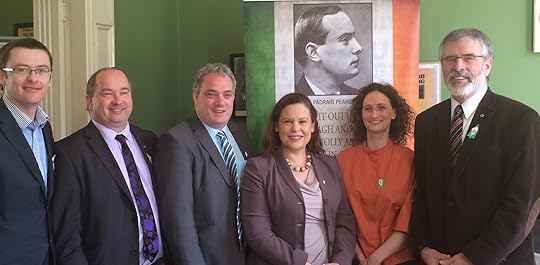
Today I visited the Ireland Institute on Pearse Street in Dublin. The Institute is a remarkable institution that seeks to promote republican ideas and thinking and to develop a republican critique. The Ireland Institute describes itself as primarily concerned with the ‘idea of self-determination. The Institute believes that self-determination is a right to be exercised in accordance with the republican ideas of justice, liberty, equality, fraternity and democracy.’
It was also for a time the family home of Padraig and Willie Pearse. Both were born there. Padraig was the President of the Republic declared at Easter 1916 and subsequently he and Willie were executed by the British.
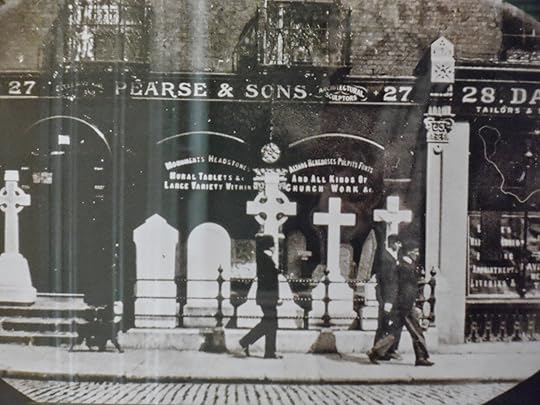 The Pearse Family home as it was
This morning Sinn Féin appropriately launched our ‘Wear and Easter Lily’ campaign in the Pearse family home. Two weeks from now tens of thousands of people in towns, villages and cities, at country crossroads and at lonely hillside graveyards across the island, will attend Easter commemorations to mark the anniversary of the Easter Rising. They will gather to remember those republican revolutionaries who, in 1916 courageously challenged the might of the greatest empire the world has ever seen, and asserted in arms Ireland’s right to independence and freedom and self-determination. They will also honour those who died in the cause of Irish freedom in every decade since 1916. But we need also to deliver on the promise of the 1916 Proclamation. The Proclamation of the Irish Republic is unfinished business. We do not yet have a United Ireland. We do not have yet have a society where all the children of the nation are cherished equally. As we approach the 100th anniversary of the 1916 Rising, Irish republicans must redouble our efforts and work together to achieve that worthy and achievable goal. We firmly believe that we can achieve the aims of Irish unity and a better society for everyone on this small island - Catholic, Protestant and Dissenter, people of all religions and none, Irish citizens and new communities alike.We believe that this can be done peacefully, democratically and by agreement. We also believe that that unity is in the best interests of all our citizens, north and south, from whatever tradition. The 1998 Good Friday Agreement — the most significant political development on this island since Partition, is the framework within which all of this is possible.
The Pearse Family home as it was
This morning Sinn Féin appropriately launched our ‘Wear and Easter Lily’ campaign in the Pearse family home. Two weeks from now tens of thousands of people in towns, villages and cities, at country crossroads and at lonely hillside graveyards across the island, will attend Easter commemorations to mark the anniversary of the Easter Rising. They will gather to remember those republican revolutionaries who, in 1916 courageously challenged the might of the greatest empire the world has ever seen, and asserted in arms Ireland’s right to independence and freedom and self-determination. They will also honour those who died in the cause of Irish freedom in every decade since 1916. But we need also to deliver on the promise of the 1916 Proclamation. The Proclamation of the Irish Republic is unfinished business. We do not yet have a United Ireland. We do not have yet have a society where all the children of the nation are cherished equally. As we approach the 100th anniversary of the 1916 Rising, Irish republicans must redouble our efforts and work together to achieve that worthy and achievable goal. We firmly believe that we can achieve the aims of Irish unity and a better society for everyone on this small island - Catholic, Protestant and Dissenter, people of all religions and none, Irish citizens and new communities alike.We believe that this can be done peacefully, democratically and by agreement. We also believe that that unity is in the best interests of all our citizens, north and south, from whatever tradition. The 1998 Good Friday Agreement — the most significant political development on this island since Partition, is the framework within which all of this is possible.
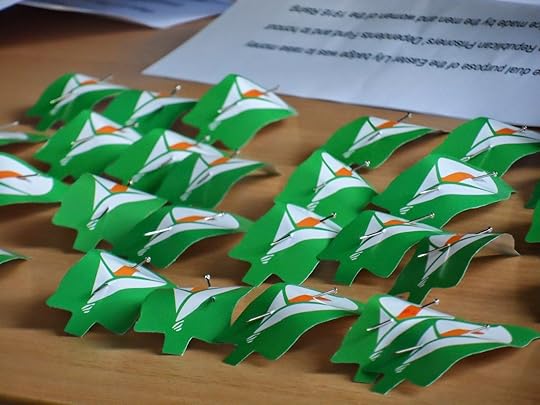 The symbol of our enduring commitment to these ideals and of our respect for all those, from every generation, who paid the ultimate sacrifice for Irish freedom, is the Easter Lily. With its simple design and its colours of green, white and orange the Lily is a symbol long associated with the Easter Rising of 1916 and one with a long and fascinating history. The first Easter Lily badges were designed in 1925 by the republican women’s organisation, Cumann na mBan, the 100th anniversary of whose founding we celebrated last week. The dual purpose of the Easter Lily badge was to raise money for the Republican Prisoners’ Dependents Fund and to honour the sacrifice made by the men and women of the 1916 Rising. A year later, the Easter Lily Commemoration Committee was formed. It continued in existence until 1965. One of its founder members was 1916 veteran and leading member of Cumann na mBan, Sighle Humphreys. The original Easter Lily badge was hand-made by republicans, who sold it often at great risk throughout the country. In the early years of its existence, people from a broad political spectrum - from Fianna Fáil to Sinn Féin, the IRA and Fianna Éireann promoted the Lily as did non-political organisations such as Conradh na Gaeilge. In February 1935, the Fianna Fáil leadership instructed the party to stop selling the Lily as it was “the symbol of an organisation of whose methods we disapprove”. For its Easter commemorations that same year, Fianna Fáil introduced a new symbol called the ‘Easter Torch’. This was sold for a number of years but soon went out.Since the 1930s, successive Fianna Fáil and Fine Gael governments have attempted to suppress sales of the Easter Lily. The unionist regime followed suit in the north. Over the decades many republicans have been harassed, arrested and jailed for keeping alive the memory of the men and women of the Easter Rising and subsequent generations through promotion of the Easter Lily. Today, many thousands across this island, north and south, continue to honour the heroic sacrifice of 1916. We wear an Easter Lily with pride, mindful not only of the past but of the promise of a brighter future.And this year Easter lilies can now also be bought online. They are available on the Sinn Féin book shop website which is sinnfeinbookshop.com and I would encourage everyone, young and old to wear it with pride and to popularize it this Easter.
The symbol of our enduring commitment to these ideals and of our respect for all those, from every generation, who paid the ultimate sacrifice for Irish freedom, is the Easter Lily. With its simple design and its colours of green, white and orange the Lily is a symbol long associated with the Easter Rising of 1916 and one with a long and fascinating history. The first Easter Lily badges were designed in 1925 by the republican women’s organisation, Cumann na mBan, the 100th anniversary of whose founding we celebrated last week. The dual purpose of the Easter Lily badge was to raise money for the Republican Prisoners’ Dependents Fund and to honour the sacrifice made by the men and women of the 1916 Rising. A year later, the Easter Lily Commemoration Committee was formed. It continued in existence until 1965. One of its founder members was 1916 veteran and leading member of Cumann na mBan, Sighle Humphreys. The original Easter Lily badge was hand-made by republicans, who sold it often at great risk throughout the country. In the early years of its existence, people from a broad political spectrum - from Fianna Fáil to Sinn Féin, the IRA and Fianna Éireann promoted the Lily as did non-political organisations such as Conradh na Gaeilge. In February 1935, the Fianna Fáil leadership instructed the party to stop selling the Lily as it was “the symbol of an organisation of whose methods we disapprove”. For its Easter commemorations that same year, Fianna Fáil introduced a new symbol called the ‘Easter Torch’. This was sold for a number of years but soon went out.Since the 1930s, successive Fianna Fáil and Fine Gael governments have attempted to suppress sales of the Easter Lily. The unionist regime followed suit in the north. Over the decades many republicans have been harassed, arrested and jailed for keeping alive the memory of the men and women of the Easter Rising and subsequent generations through promotion of the Easter Lily. Today, many thousands across this island, north and south, continue to honour the heroic sacrifice of 1916. We wear an Easter Lily with pride, mindful not only of the past but of the promise of a brighter future.And this year Easter lilies can now also be bought online. They are available on the Sinn Féin book shop website which is sinnfeinbookshop.com and I would encourage everyone, young and old to wear it with pride and to popularize it this Easter.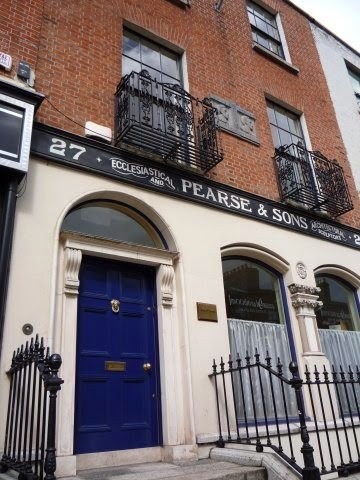 The Pearse family home as it is - the Ireland Institute
The Pearse family home as it is - the Ireland Institute
Published on April 08, 2014 09:29
March 29, 2014
Tony Benn – ‘Don’t wrestle with a chimney sweep’
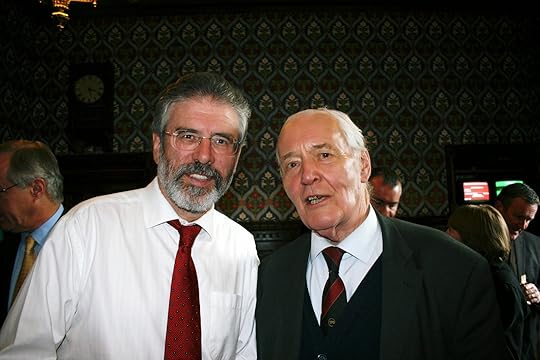
Tony Benn was buried on Thursday morning. Martin McGuinness, Michelle Gildernew and I attended the funeral at St. Margaret’s, a small church which lies across the road from the British Parliament and in the shadow of Westminster Abbey. In the life of the British Parliament it is known as the MPs chapel.
Tony died two weeks ago. In over 60 years of political activism he was a tireless and articulate campaigner for democracy, social justice and equality in Britain. He was an internationalist, as well as a stalwart friend and advocate for peace in Ireland and for Irish unity.
All of this was reflected in the breadth of political opinion that packed into the small chapel or stood outside.
His three sons and daughter and his sole surviving brother David all spoke of him and of the events in his life that shaped him. David explained that Tony ‘hated’ attending Westminster School. It brought home to him the inequity of the class system. His brother Michael was killed in World War Two and that made him a passionate pacifist. And in the RAF in that period Tony was stationed in what was then Rhodesia and saw for himself the ill-treatment of black Africans and that made him a life-long campaigner for equality and against racism.
Tony was also a Christian, raised in the anti-establishment Congregationalist tradition.
As his sons and grandsons carried his remains from the Chapel at the end of the service the organ gently played ‘The Red Flag’. As mourners realised what was being played many inside and outside began to sing and applaud.
Like all who were there on Thursday morning I have my fond memories of Tony Benn. My earliest recollection of meeting him was in London in July 1983, a month after I had been elected for the first time as the MP for west Belfast. The British efforts to criminalise the republican struggle had foundered two years earlier on the courage of the hunger strikers but the Thatcher government was still locked into a political and military strategy of repression, of shoot-to-kill actions and collusion, and of trying to politically isolate and criminalise Irish republicanism.
Just prior to Christmas 1982 the British Home Secretary Willie Whitelaw had banned me from travelling to London for an event organised by the Troops Out Movement.
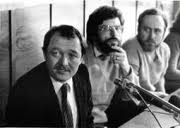
In February 1983 Ken Livingstone, who was leader of the GLC (Greater London Council), visited west Belfast. The British media was predictably outraged. In June I was elected as MP by the people of west Belfast. They were outraged again.
So, in July Joe Austin and I travelled to London to meet Ken Livingstone in County Hall, just across the River Thames from the British Parliament. The British media found new levels of outrage!
Among those we met in County Hall was Tony Benn. Tony had been in the British Parliament from 1950, was a Labour government Minister in several governments, including the Wilson government that sent in the British Army in 1969, and he had a reputation of being an outspoken critic of British policy in Ireland. He also kept a daily diary of his work which has been published over the years in a series of books providing an insight into the inner workings of the British political system.
In his diary dated Tuesday 26 July 1983 Tony wrote about that visit: ‘Gerry Adams began the meeting by thanking Ken Livingstone for his invitation. He said there was an ongoing attempt to develop a dialogue as a basis for peace … We have a lot in common with British socialists. You can’t be a socialist in Britain if you support British imperialism in Ireland, or even if you ignore it.’
In his response Tony welcomed the dialogue. He wrote: ‘I thought this should be seen as a mission for peace. People are beginning to realise that whatever attitude towards Northern Ireland, the present policy is one of absolute bankruptcy…’
A few years later, in June 1989, I attended a Labour Party Conference. In his diary Tony expressed his concern at political censorship and the impact Thatcher’s broadcasting ban, introduced the previous October, was having on the media.
He records: ‘The television crews were filming Gerry Adams speaking, knowing it would be illegal for them to play the sound recording, because of the broadcasting ban on any direct speech by Sinn Fein members. The journalists would all be in trouble, might be sacked, might even be punished more severely, and I felt a cold hand around my heart as I sat there watching this censorship process taking place.’
In a later interview Tony explained his attitude to British policy in Ireland succinctly. He said: ‘The problem is not an ‘Irish problem’ in the United Kingdom, but a British problem in Ireland. Once you get that straight you can see it quite differently. I’m not a nationalist but I support the right of people to control their own affairs and to that extent I am really strongly in favour of getting the British out of Northern Ireland.’
During the negotiations that led to the Good Friday Agreement Tony provided me with a paper on the constitutional issue. Sinn Féin had been pressing the British to change the constitutional arrangements, specifically removing the Government of Ireland Act. We believed that the unionist veto had to end and that consent had to apply both ways, that is not just unionist consent but nationalist and republican consent as well. Consequently any new agreement had to be built on a working partnership of equality.
In his paper Tony explained to me that absolute British sovereignty can be regarded as having been absorbed and consolidated in the Act of Union of 1800, which united Scotland, Ireland and England and Wales as one kingdom. It remained absolute in 1920, when Ireland was partitioned, even though the majority of Irish people had voted for independence. Now, according to Tony, absolute sovereignty was being vested instead in the people of the north ‘to be quantified or assessed by a referendum requiring a simple majority’.
What other state in the world has written into its legislation, and as part of an international treaty the right of a part of that state to secede if a majority within a specific geographical area wish to? States have fought wars over secession. There is currently a crisis around Crimea over its decision to secede from Ukraine and join Russia.
On another occasion I recall Tony telling me about erecting a plaque in the British Parliament for the Countess Markievicz. He would put it up and the powers that be would remove it and he would put it up again. It was one of several plaques Tony put up without permission. He felt that as Markievicz was the first woman elected to the British Parliament that this fact should be recorded.
Tony did not stand for the British Parliament in 2001. He said he was ‘leaving parliament in order to spend more time on politics.’ And he did. Tony became President of the Stop the War Coalition.
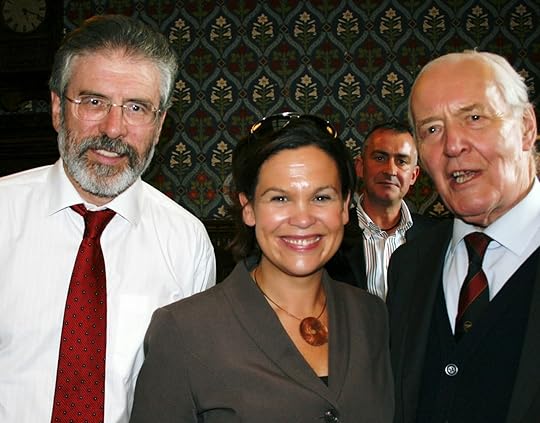 Three years ago Sinn Féin organised an event in the London Irish Centre to mark the 30th anniversary of the Hunger Strike. Tony was the final speaker. He spoke of how necessary it is to see the Irish struggle for self-determination not simply as a small isolated fight, but as part of a huge and general struggle against colonialism worldwide. He pointed to the rise of Sinn Fein, the advancement of the cause of Irish unity and of his own conviction that Irish reunification would happen.
Three years ago Sinn Féin organised an event in the London Irish Centre to mark the 30th anniversary of the Hunger Strike. Tony was the final speaker. He spoke of how necessary it is to see the Irish struggle for self-determination not simply as a small isolated fight, but as part of a huge and general struggle against colonialism worldwide. He pointed to the rise of Sinn Fein, the advancement of the cause of Irish unity and of his own conviction that Irish reunification would happen. Finally, apart from sharing much of our politics Tony and Sinn Féin were also the target of the British media over many years. He too was vilified and demonised.
In his remarks in the Chapel his son recalled that on one occasion when he asked his father how he could maintain his composure and not get angry and lash out at those who denounced him Tony gave him the same advice his father had given him: ‘Don’t wrestle with the chimney sweep.’
In other words don’t sink to the same level as your opponents. If you do you will end up as dirty as them and achieve nothing. Stay focussed on what you want to achieve.
A valuable life lesson.
On behalf of Sinn Féin I want to extend my condolences to Tony’s many friends but especially his sons and daughter; Stephen, Hilary, Melissa, and Joshua and his brother David. Tony's Funeral
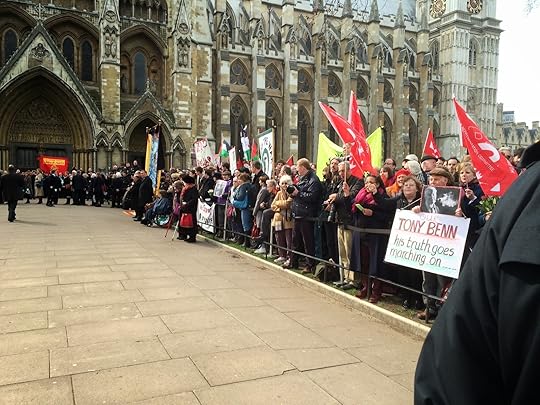
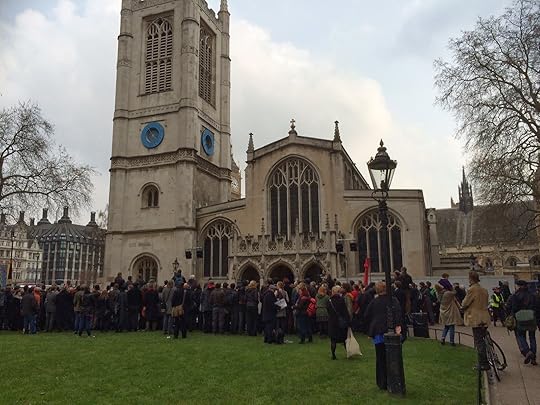
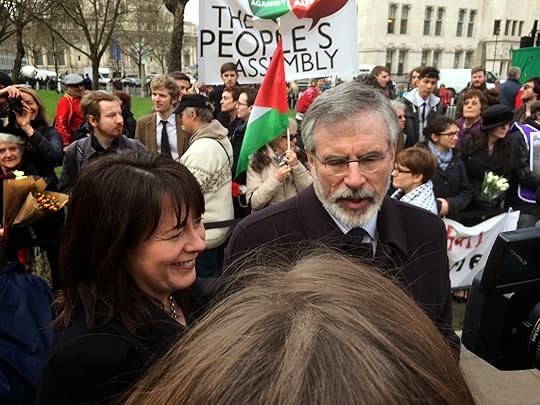
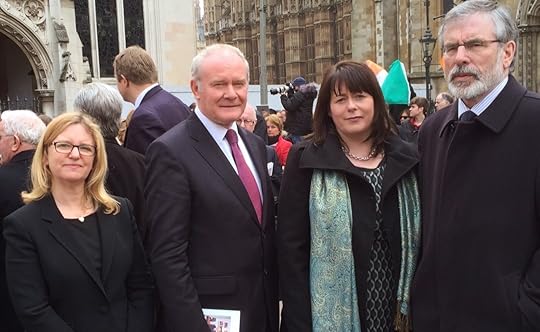
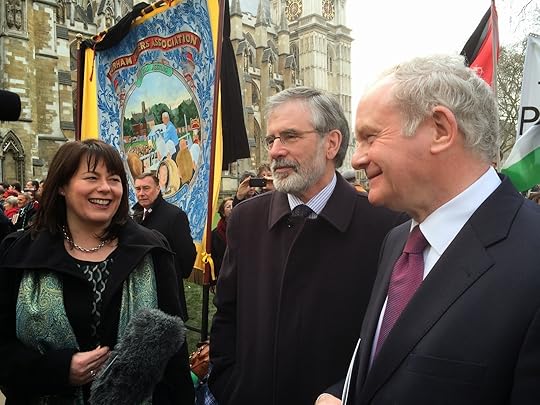
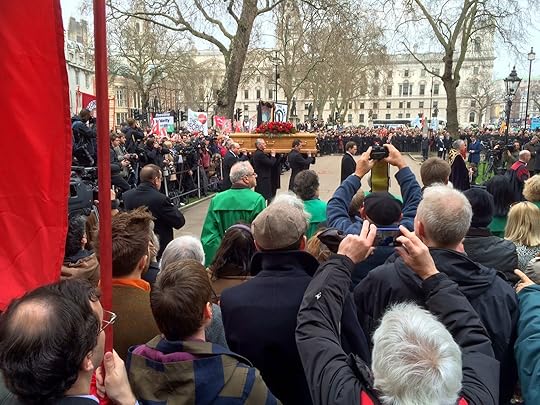
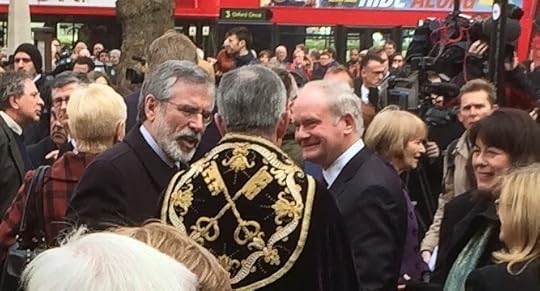
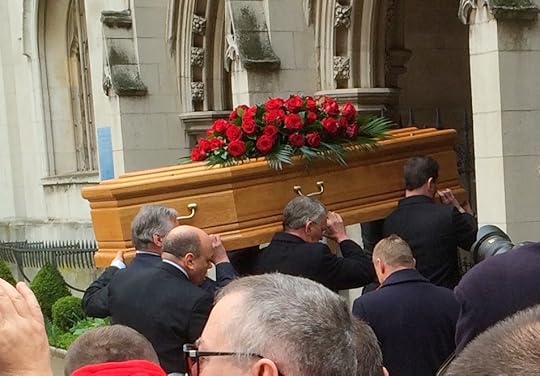
Published on March 29, 2014 06:13
March 28, 2014
Boston Oral History Project a Sham
The latest twist in the Boston Oral History project occurred last week when former republican activist Ivor Bell, who has opposed the Sinn Féin leadership for over two decades, was arrested and subsequently charged in relation to the killing of Jean McConville. The PSNI claim that Bell was one of those who gave interviews to the Boston College Oral History project in which it is alleged that he talked of his part as an IRA activist. According to the media this is the basis for the charges levelled against him. Bell, through his lawyer denies any involvement in the death of Jean McConville. Media reports following this said that the PSNI are interested in speaking to me. There has been a persistent campaign by some elements of the media and by political opponents to try to link me to Jean McConville’s killing and secret burial by the IRA. I have said before and do so again that what happened to Jean McConville was a terrible injustice. I was not involved in any part of it. I instructed my solicitor to contact the PSNI and to make it clear to them that I am available to meet at any time on this issue. The basis of these allegations have been the false accusations and spurious claims of a small number of embittered former republican activists who are hostile to the Sinn Féin peace strategy, to the Sinn Féin leadership and to me in particular. All are avowed opponents of the peace process. They believe the IRA was wrong to call its cessations and to take the initiatives for peace that it did. These people have campaigned against the Good Friday Agreement and want it destroyed. Until recently many argued for a return to war. They have gone to great lengths to attack the republican struggle, the peace process and the political process through lies, distortions and personal attacks. It is precisely because of their opposition to Sinn Féin that these individuals were deliberately selected by those who ran the Boston Oral History Project. It is no co-incidence that those the project spoke to are all oppositional voices. This project was flawed and biased from the outset. It was an entirely bogus, shoddy and self-serving effort. It was not a genuine or serious or ethically based history project. The idea for it originated with Paul Bew, an advisor to David Trimble, and was taken up by Ed Moloney and Anthony McIntyre who conducted the interviews. Both men are relentless and vitriolic critics and opponents of the Sinn Féin leadership and peace strategy and of me. McIntyre has availed of every opportunity to ridicule Sinn Féin and has accused us of having sold out. The title of his book is ‘Good Friday - The Death of Irish Republicanism’. Moloney has been equally venomous in his comments. In his antagonism toward Sinn Féin he has even accused other journalists of failing to challenge and confront us. Moloney’s criticism of how others report the political situation does not extend to his own failings. He and McIntyre told those they interviewed that the tapes would not be released until after their deaths. It was a promise they could not keep and they knew it. It is also reported that the interviewees spoke at length about their time as IRA volunteers. Some went further by naming other republican activists. Of course, there is also no guarantee that the interviewees told the truth. All are disgruntled former activists who may have hoped, like Brendan Hughes, that their words from beyond the grave would damage Sinn Féin. This was acknowledged by historian Professor Thomas Hachey from Boston College who in March 2010 told the News Letter; ‘It's a catharsis for some of them when they've suffered so much...I'd like to think in most cases they were motivated by wanting to tell their story but some of them it was probably to settle old scores and they would give a very jaundiced account.’ Nor is it just Irish republicans who have been critical of Moloney and McIntyre. According to political commentator and writer Roy Greenslade some US academics have described the Boston college debacle as “at best, naive and, at worst, manipulative, to give interviewees a guarantee of confidentiality.” The issue of the past does need to be dealt with. Sinn Féin is committed to doing this. We want to bring closure to victims and their families. That is why we have argued for an independent, international, truth recovery process. However, if this cannot be agreed then we are seeking the implementation of the Haass compromise proposals. These include the right of families to choose whether to pursue legal action or to seek maximum truth recovery. The Boston Oral History Project was never about achieving any of this. It was a politically contrived project with a clear anti Sinn Féin political agenda.
Published on March 28, 2014 04:00
March 26, 2014
Shane Mac Thomais – Republican historian
 Shane MacThomais was just 46 when he died suddenly last Thursday. He took his own life and was found in Glasnevin Cemetery where he had worked off and on since he was a teenager and where he was employed for the last 14 years as the resident historian. He played a major part in its very successful refurbishment and the transformation of that historic place.Shane was hugely popular and his walking tours of Dublin and Glasnevin were renowned. He did regular interviews on tv and radio and was the author of several books and scores of pamphlets. His last book which was published in 2012 ‘Dead Interesting – Stories from the Graveyards of Dublin’ also told the story of other Dublin cemeteries including the Huguenot graveyard.
Shane MacThomais was just 46 when he died suddenly last Thursday. He took his own life and was found in Glasnevin Cemetery where he had worked off and on since he was a teenager and where he was employed for the last 14 years as the resident historian. He played a major part in its very successful refurbishment and the transformation of that historic place.Shane was hugely popular and his walking tours of Dublin and Glasnevin were renowned. He did regular interviews on tv and radio and was the author of several books and scores of pamphlets. His last book which was published in 2012 ‘Dead Interesting – Stories from the Graveyards of Dublin’ also told the story of other Dublin cemeteries including the Huguenot graveyard.The refurbishment of the Daniel O Connell tower, and the construction of a new staircase, was Shane’s most recent project but he was also responsible for an exhibition about to open on the 100thcentenary of the Cumann na mBán. In recent years he had organised exhibitions around the centenary of the Irish Volunteers and of the Ulster Rifles. This latter saw him work closely with the UVF in Belfast.Today a humanist service was held in the Chapel at Glasnevin cemetery for Shane. It was packed and outside hundreds more joined in celebrating the life of this outstanding republican. Speakers included his friends Conor, Lorcan, Jack, George, his sisters Orla and Maeliosa and his daughter Morgane. I was one of those asked to contribute to the service. I said:
“I was both very shocked and deeply saddened when I heard the news of Shane’s death. It had come just out of the blue. I knew Shane both personally and politically. He was enormously entertaining and insightful about Irish history. He was also deeply passionate about history. It wasn’t something for Shane that was dry and dusty. It was in his consciousness; something very real - something that shaped his world - and shapes our world.
He particularly loved Dublin's history; the rebel history of Dublin that can you can see everywhere if you know where to look. Shane showed us where to look. He showed us where to find that wonderful, courageous past and remember it and celebrate it and particularly the people - all of people.
He brought Irish history alive to the thousands who visited Glasnevin every year and also on the streets of Dublin. He wanted to ensure that young people in particular would know their own history and be proud of it.
Shane literally lit up when he was talking about historical events. He helped to organise Sinn Féin’s Céad Bliain celebrations (100th birthday) in the Mansion House some years ago. The imagery, the exhibition all around the walls of the Mansion House were down to Shane.
I watched him during the event. He couldn’t keep still. He was quietly speaking along with the speakers, mouthing the lines of the contributors on the stage. And he was deeply engrossed in making sure that everything was done properly.
That event was a very fine and fitting tribute to the contribution played by Sinn Féin activists over 100 years of activism. It was also a very fine tribute to those who organised it and in particular of Shane.
Shane was generous in his writings. He was generous in his work. He was always inclusive. He wasn’t narrow in his view. He understood how the threads of history weave the fabric of the past.
Shane was a very committed Irish republican, like his mother Rosaleen, who suffered a lot for her beliefs, and like his father Eamonn who was also an author and a historian.
I knew Eamonn better than I knew Shane. Eamon was one of the most interesting people ever to travel anywhere across this island or anywhere across this city. Martin McGuinness was in prison with Eamonn. They were in Portlaoise for a while, and he has very fond memories of Eamonn, like a seanachaí, telling them yarns and stories and the social history of Ireland and of the ordinary people.
Shane’s last book, ‘Dead Interesting’ has a beautiful preface about this father.
Shane brought the same passion and enthusiasm to his political involvement. He believed in a real republic where citizens would have rights and where ordinary people, the citizens would come first. He believed in a united Ireland and in a real republic, based on social justice.
He was a true Dub and a character. His passing comes very close to the anniversary of the death of another true Dub, Brendan Behan whose wit and humour and sense of history and Dublin identity Shane would have keenly appreciated and identified with.
I remember the protest at the auction of 1916 memorabilia by Sinn Féin youth. And Shane got arrested. Of all the kids that were there Shane was arrested – he was like the oldest swinger in town among all the young ones. There is also a great photo of him at another historical re-enactment in a slouched hat in, I believe the uniform of the Citizens Army. He has a great cheeky grin – that great mischievous smile of his.
Shane's death leaves a great void. He leaves a hole that can’t be filled; particularly for his daughter Morgane, for his mother Rosaleen, for sisters Orla and Maeliosa and his brother Damien and for his family, for Ruth and his wide circle of friends.
Shane encouraged people. He connected with people. When someone motivates you and encourages you and catches your interest – that’s special. We all know of the teacher who by his or her ability put us on to something that was good for us, who changed lives, who sparked a lifetime interest – that was Shane.
He will be missed, especially by his family, but also by many others will miss him too. The 1916 centenary celebrations will not be the same without Shane. He would have brought a special little something to that.
Shane had a life well lived. It should be celebrated. All of us have flaws. We are all imperfect. There is a crack in everything. That’s how the light gets in. That’s how the light gets in.
I want to finish with a little poem by Brendan Kennelly for Morgane and for Rosaleen.
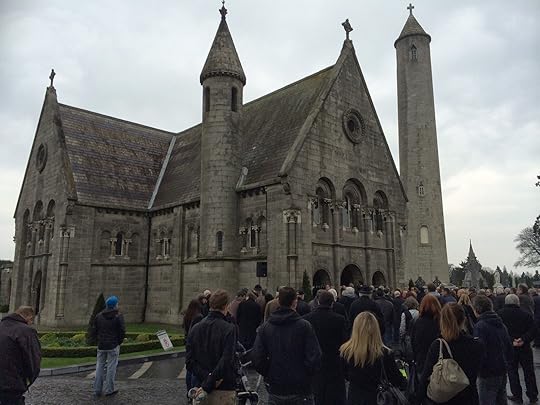 Begin
Begin Begin to the loneliness that cannot end
since it perhaps is what makes us begin,
begin to wonder at unknown faces
at crying birds in the sudden rain
at branches stark in the willing sunlight
at seagulls foraging for bread
at couples sharing a sunny secret
alone together while making good.
Though we live in a world that dreams of ending
that always seems about to give in
something that will not acknowledge conclusion
insists that forever begin.
Slan Shane
Published on March 26, 2014 15:37
March 21, 2014
This land is your land - Woody Guthrie
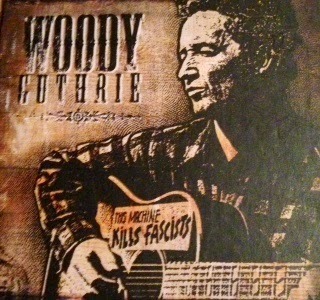
Sometimes on my travels to the USA I have had the opportunity to step outside of the politics and meet new people and make new friends. On my first travels coast to coast in 1994 some friends in the New York Police Department took a group of us to Ellis Island in an NYPD police launch. It was a poignant visit as we looked at the glass cases containing thousands of artefacts belonging to the millions who passed through its halls. A blackthorn walking stick. A piece of delft shaped as Ireland. Cups and saucers and ornaments. A little piece of linen with the four provinces stitched to it. The small pieces of memorabilia of home carried by immigrants braving a dangerous crossing of the wide Atlantic on their way to a strange land where they hoped for a new and better future.
Annie Moore, a 15 year old from Cork was the first immigrant to be processed there. Many of the millions more who were to land at Ellis Island between 1892 and 1954 were Irish. Years later I walked with friends in San Francisco across the Golden Gate Bridge. Later still they brought me to see the magnificent giant sequoia trees. Hundreds of feet high and some of them thousands of years old. Several years ago I travelled to upstate New York and met one of my heroes Pete Seegar, who died recently. These have been brief interludes in normally busy schedules.
On Saturday, a few hours before I was due to catch my flight home, my friend Todd arranged for me to meet Nora Guthrie, the daughter of Woody Guthrie, another of my heroes – and a contemporary of Pete Seegar. For those who have never heard of Woody Guthrie or listened to his music, he was a legendary folk singer, song writer, poet, author and political activist. He wrote and sang songs of his experience of the Great depression of the 1930s and of the impact on ordinary families of the Dust Bowl migration that followed. As a young man he was one of those who hitchhiked and rode freight trains across the United States. His observations of the brutalities and injustices of those times and of his radical politics are often reflected in his songs. Perhaps one of his most famous songs is ‘This land is your land.’
In the fourth and sixth verses – which are not always sung - Woody protests against inequality.
As I went walking, I saw a sign there,
And on the sign, it said "no trespassing." (Another version uses "Private Property")
But on the other side, it didn't say nothing!
That side was made for you and me.
In the squares of the city, In the shadow of a steeple;
By the relief office, I'd seen my people.
As they stood there hungry, I stood there asking,
Is this land made for you and me?
His music and writing influenced generations of musicians including Bob Dylan, Bruce Springsteen, Tom Paxton, Billy Bragg and countless others.
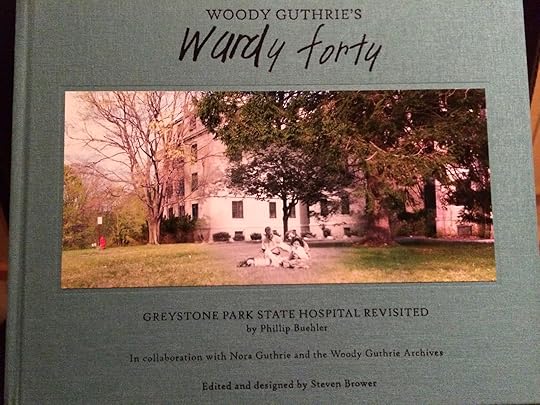 Recently Todd attended the launch of a book entitled ‘Woody Guthrie’s Wardy forty’. It is a book principally of photographs but with the words of Nora and others recounting the circumstances of Woody’s time in Greystone Park Psychiatric Hospital and his remarkable and courageous battle against the debilitating and ultimately fatal Huntingdon Chronea disease. Symptoms include involuntary movements, cognitive loss and behavioural disturbances. The book also tells of his family’s determination to support him.
Recently Todd attended the launch of a book entitled ‘Woody Guthrie’s Wardy forty’. It is a book principally of photographs but with the words of Nora and others recounting the circumstances of Woody’s time in Greystone Park Psychiatric Hospital and his remarkable and courageous battle against the debilitating and ultimately fatal Huntingdon Chronea disease. Symptoms include involuntary movements, cognitive loss and behavioural disturbances. The book also tells of his family’s determination to support him. The book came about by chance. The author, Phillip Buehler, is a photographer who has long had a fascination with derelict buildings. One of his projects involved visiting Greystone Park Psychiatric Hospital in New Jersey. Buehler climbed into the abandoned building through a broken window. In what had been the hospital’s darkroom he found patients’ intake and discharge photographs, as well as ward journals. There were no names just numbers. After searching the internet he discovered that Wood Guthrie had stayed there and that Bob Dylan had visited him in the hospital in 1961.
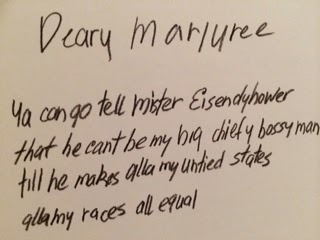
A note written to his wife Marjorie in 1956. Eisenhower was running for the US Presidency.
Buehler contacted Nora, found Woody’s case number in the Wood Guthrie Archives and returned to Greystones where he recovered his admittance photo and details of his condition. Woody was originally kept in Ward 40 – hence the title of the book. Buehler recalls how Woody’s manager Harold Leventhal and Fred Hellerman, who along with Pete Seegar was a member of the blacklisted group The Weavers, “came to visit Woody at Greystone. When they asked how he was doing. Woody answered:
‘You don’t have to worry about me. I’m worried about how you boys are doing. Out there if you say you are a communist, they’ll put you in jail. In here, I can get up there amd say I’m a communist and all they’ll say is ’Ah he’s crazy.’ You know this is the last free place in America.’Ten years later this amazing book has been published. It tells a part of the Wood Guthrie story never told before. It reveals the horror of Huntingdon Chronea disease. and how at the end Woody couldn’t speak but it is also a story of enormous courage by his wife Marjorie and his children Joady, Arlo and Nora who visited him every week, occasionally took him out of the hospital and loved him and cared for him.
Woody Guthrie was born on July 14th1912 and died on October 3rd 1967.
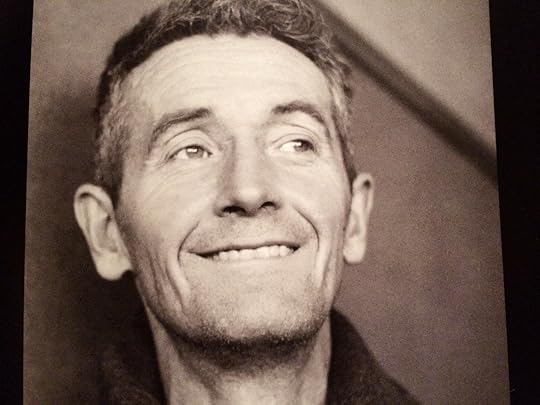
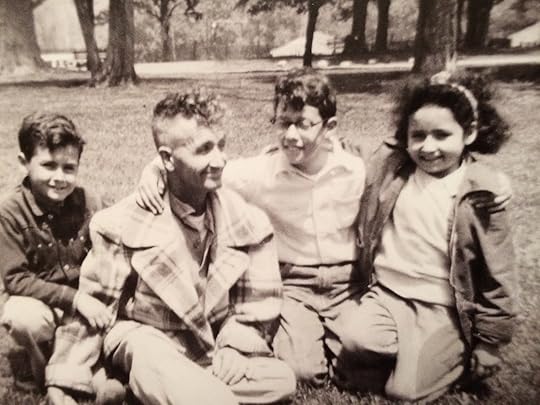
Woody with Joady, Arlo and Nora
Published on March 21, 2014 04:06
March 10, 2014
International Women’s Day: The struggle for Equality continues - Adams
International Women’s Day is an important opportunity to celebrate women who are active in society; in their communities, trade unions, voluntary organisations and the political institutions of Ireland.
However, it is also a time for reflecting on the serious inequalities that still exist and the fact that in many ways women continue to be second class citizens. A study by the EU agency Fundamental Rights (FRA) on violence against women across the European Union, which was published last Wednesday, found that one third of the women surveyed were victims of sexual of physical violence. A shocking and harrowing fact.
A director FRA said: ‘The enormity of the problem is proof that violence against women does not impact a few women only – it impacts on society every day.’
Significantly the research found that 70% of women in the Irish state who experience sexual and physical violence suffer in silence. The research also found that austerity measures have a devastating effect on female victims of violence with cuts to vital refuge services being made by austerity touting governments, including our own.
The last Fianna Fáil government and the current Fine Gael and Labour coalition have cut core funding for rape crisis frontline services by 16.5% and more cuts are to come. This is unacceptable, dangerous and devastating.
Women have been disproportionality impacted by government imposed austerity measures with cuts to maternity benefits, children’s allowance and an increase in the cost of living.
Despite the progress that has been made in recent decades there is still serious inequality between women and men in the workplace; in employment rights; and in access to education and health.
Women have been failed by the political system where they are continually underrepresented in both the Dáil and the Seanad. Politics remains an unfriendly environment for families and women, a reality that benefits no one.
In this context the Irish government should consider the six recommendations published earlier this week in a report that was conducted as part of National Women’s Council of Ireland’s ‘Women in Politics and Decision-Making’ project.
The report recommends the creation of a family-friendly Oireachtas, including maternity leave for women politicians; paternity leave for all men, including male politicians; Work more business hours and discontinue the practice of all-night debates; Introduce video-conferencing and remote-voting. It also calls for a 40% gender quota for Cabinet appointments; a gender audit of the Oireachtas and establishment of a clear plan, including benchmarks and indicators, for making the institution’s policies and practices more gender sensitive.
Sexual harassment, abuse and domestic violence continue to be a serious problem in the workplace and society. A study carried out by the trade union Unite has revealed that since the start of the economic collapse in the south in 2008 the pay gap between men and women has increased with more than one-fifth of women workers in low paid jobs. 600,000 women are living in deprivation or at risk of poverty across the country.
These are serious problems that go to the heart of the type of society we are and of the kind we want to be.
Irish Republican women, from the very birth of our struggle for freedom and independence, have understood the connection between Irish freedom and equality, and women’s rights. From Ann Devlin to Anna Parnell to Countess Markievicz to Sheena Campbell to Mairead Farrell, whose anniversary was last week, there is an unbroken line of women who sacrificed all in the quest for freedom and equality and justice.
Sometimes their sacrifice is remembered, but more often than not their actions are hidden in the shadows of their male contemporaries. Republican history is littered with instances of women stepping into the fray when the men were either executed or imprisoned, only to be sidelined once more, when the men were released from prison.
I had the great privilege of knowing some of this generation of republican women activists. They were ordinary women, many little more than teenagers, who at a time of great crisis and challenge for our people came forward to stand against injustice and to give leadership.
Theirs was not an easy road. The choices they made were difficult and the consequences for them and their families were significant. In prison they faced isolation, deprivation, brutality, hunger strike and strip searching. Outside of prison they were harassed, threatened, took great risks and some died.
The 1916 Proclamation recognises the rights of women. It opens by addressing Irish men and Irish women and guarantees not just ‘religious and civil liberty”; but also “equal rights and equal opportunities to all its citizens”. At a time when women in most countries did not have the vote, the government of the new republic would be “elected by the suffrages of all her men and women”.
I often wonder what the men and women of 1916 would think of womens place on the island of Ireland today. They would probably contrast the words of the 1916 Proclamation and the Draft Programme of the First Dáil with the social and economic reality of many women’s lives.
They would contrast the impoverished existence of many women and their families in our inner cities and rural communities. They would actively oppose violence against women. They would lament the low pay and exploitation of women workers. They would castigate the under-funding of women’s health and family planning services, and the absence of support for quality childcare for the children of the nation.
Much of women’s work is undervalued and underpaid. Irish women are still disproportionately concentrated in low-skill, low paid and part-time employment. Older women are more likely to live in social isolation. Inequalities faced by all women in Ireland are magnified for women with disabilities.
Traveller women face higher poverty, mortality and unemployment levels, and lower levels of educational attainment than their settled counterparts.
Internationally girls and women continue to face additional issues like female genital mutilation and arranged marriages. Practices that must end immediately.
Women on the island of Ireland and all over the world have won many battles for equality over the past century, but there are further battles ahead. The struggle for equality will continue.
However, it is also a time for reflecting on the serious inequalities that still exist and the fact that in many ways women continue to be second class citizens. A study by the EU agency Fundamental Rights (FRA) on violence against women across the European Union, which was published last Wednesday, found that one third of the women surveyed were victims of sexual of physical violence. A shocking and harrowing fact.
A director FRA said: ‘The enormity of the problem is proof that violence against women does not impact a few women only – it impacts on society every day.’
Significantly the research found that 70% of women in the Irish state who experience sexual and physical violence suffer in silence. The research also found that austerity measures have a devastating effect on female victims of violence with cuts to vital refuge services being made by austerity touting governments, including our own.
The last Fianna Fáil government and the current Fine Gael and Labour coalition have cut core funding for rape crisis frontline services by 16.5% and more cuts are to come. This is unacceptable, dangerous and devastating.
Women have been disproportionality impacted by government imposed austerity measures with cuts to maternity benefits, children’s allowance and an increase in the cost of living.
Despite the progress that has been made in recent decades there is still serious inequality between women and men in the workplace; in employment rights; and in access to education and health.
Women have been failed by the political system where they are continually underrepresented in both the Dáil and the Seanad. Politics remains an unfriendly environment for families and women, a reality that benefits no one.
In this context the Irish government should consider the six recommendations published earlier this week in a report that was conducted as part of National Women’s Council of Ireland’s ‘Women in Politics and Decision-Making’ project.
The report recommends the creation of a family-friendly Oireachtas, including maternity leave for women politicians; paternity leave for all men, including male politicians; Work more business hours and discontinue the practice of all-night debates; Introduce video-conferencing and remote-voting. It also calls for a 40% gender quota for Cabinet appointments; a gender audit of the Oireachtas and establishment of a clear plan, including benchmarks and indicators, for making the institution’s policies and practices more gender sensitive.
Sexual harassment, abuse and domestic violence continue to be a serious problem in the workplace and society. A study carried out by the trade union Unite has revealed that since the start of the economic collapse in the south in 2008 the pay gap between men and women has increased with more than one-fifth of women workers in low paid jobs. 600,000 women are living in deprivation or at risk of poverty across the country.
These are serious problems that go to the heart of the type of society we are and of the kind we want to be.
Irish Republican women, from the very birth of our struggle for freedom and independence, have understood the connection between Irish freedom and equality, and women’s rights. From Ann Devlin to Anna Parnell to Countess Markievicz to Sheena Campbell to Mairead Farrell, whose anniversary was last week, there is an unbroken line of women who sacrificed all in the quest for freedom and equality and justice.
Sometimes their sacrifice is remembered, but more often than not their actions are hidden in the shadows of their male contemporaries. Republican history is littered with instances of women stepping into the fray when the men were either executed or imprisoned, only to be sidelined once more, when the men were released from prison.
I had the great privilege of knowing some of this generation of republican women activists. They were ordinary women, many little more than teenagers, who at a time of great crisis and challenge for our people came forward to stand against injustice and to give leadership.
Theirs was not an easy road. The choices they made were difficult and the consequences for them and their families were significant. In prison they faced isolation, deprivation, brutality, hunger strike and strip searching. Outside of prison they were harassed, threatened, took great risks and some died.
The 1916 Proclamation recognises the rights of women. It opens by addressing Irish men and Irish women and guarantees not just ‘religious and civil liberty”; but also “equal rights and equal opportunities to all its citizens”. At a time when women in most countries did not have the vote, the government of the new republic would be “elected by the suffrages of all her men and women”.
I often wonder what the men and women of 1916 would think of womens place on the island of Ireland today. They would probably contrast the words of the 1916 Proclamation and the Draft Programme of the First Dáil with the social and economic reality of many women’s lives.
They would contrast the impoverished existence of many women and their families in our inner cities and rural communities. They would actively oppose violence against women. They would lament the low pay and exploitation of women workers. They would castigate the under-funding of women’s health and family planning services, and the absence of support for quality childcare for the children of the nation.
Much of women’s work is undervalued and underpaid. Irish women are still disproportionately concentrated in low-skill, low paid and part-time employment. Older women are more likely to live in social isolation. Inequalities faced by all women in Ireland are magnified for women with disabilities.
Traveller women face higher poverty, mortality and unemployment levels, and lower levels of educational attainment than their settled counterparts.
Internationally girls and women continue to face additional issues like female genital mutilation and arranged marriages. Practices that must end immediately.
Women on the island of Ireland and all over the world have won many battles for equality over the past century, but there are further battles ahead. The struggle for equality will continue.
Published on March 10, 2014 06:24
Gerry Adams's Blog
- Gerry Adams's profile
- 29 followers
Gerry Adams isn't a Goodreads Author
(yet),
but they
do have a blog,
so here are some recent posts imported from
their feed.



